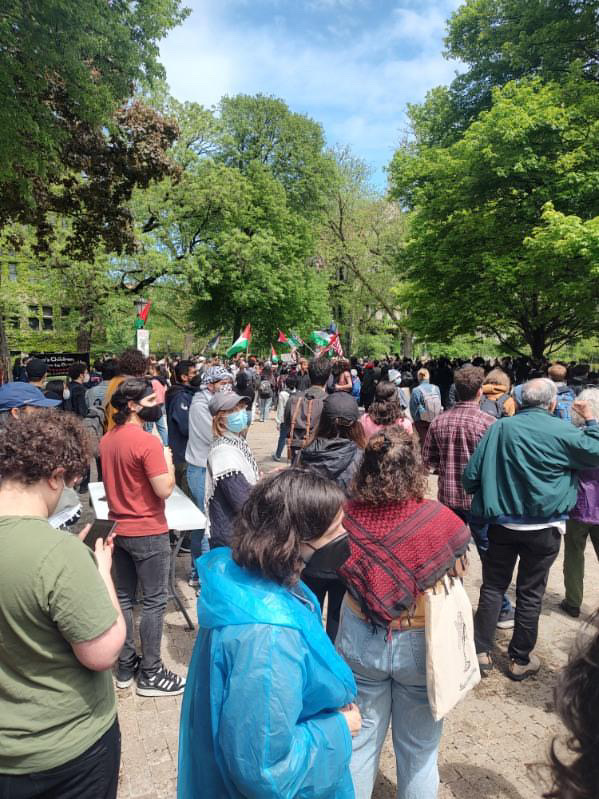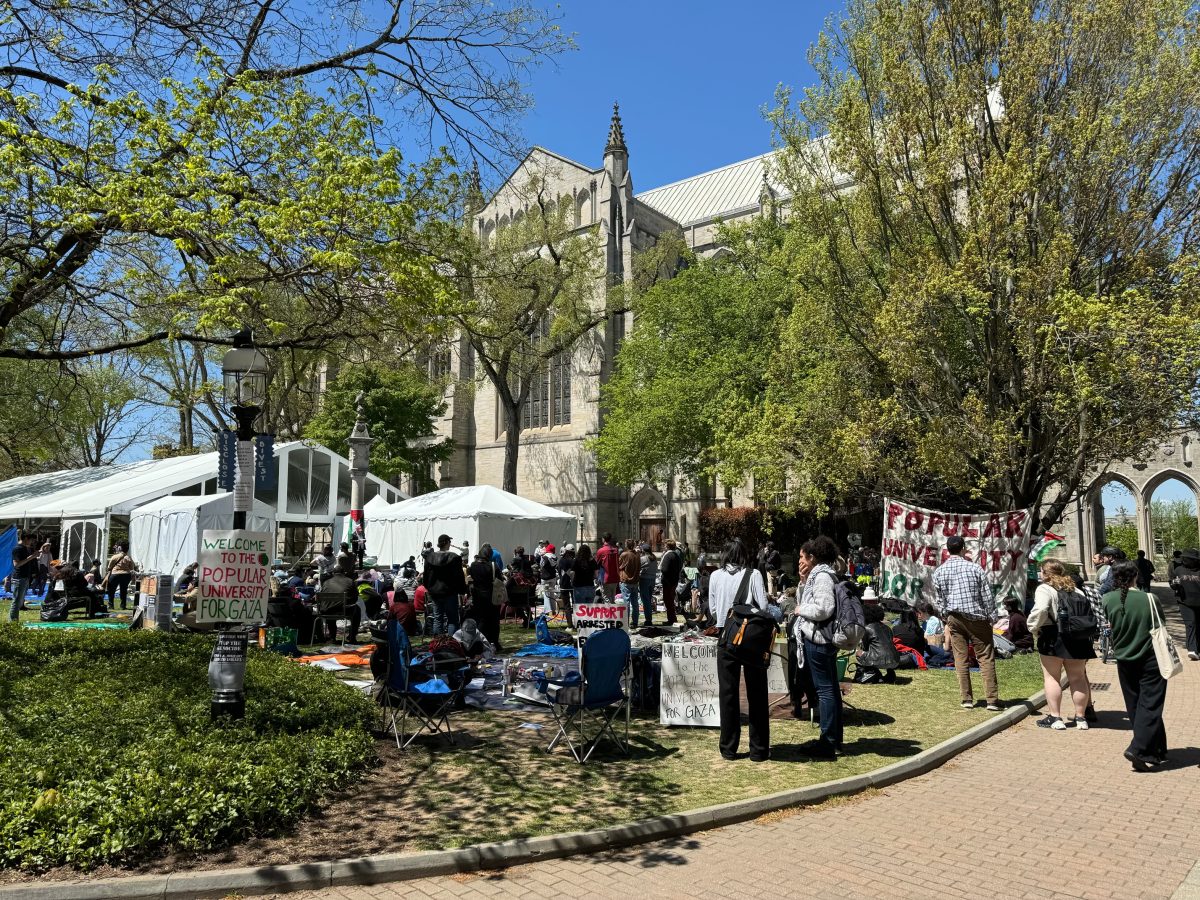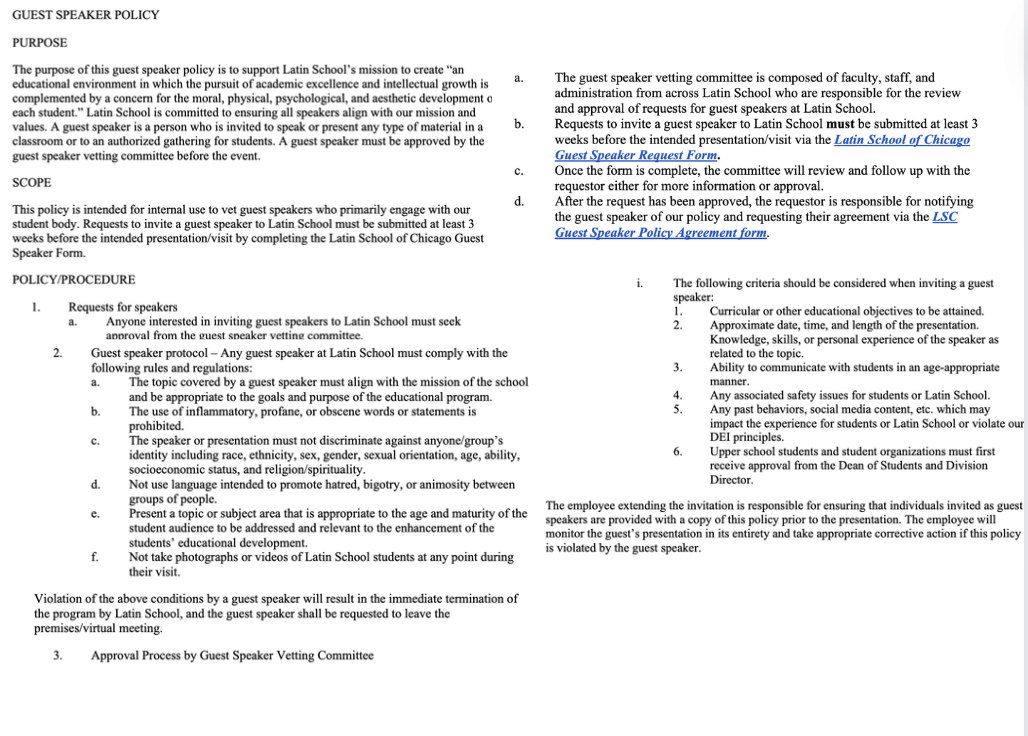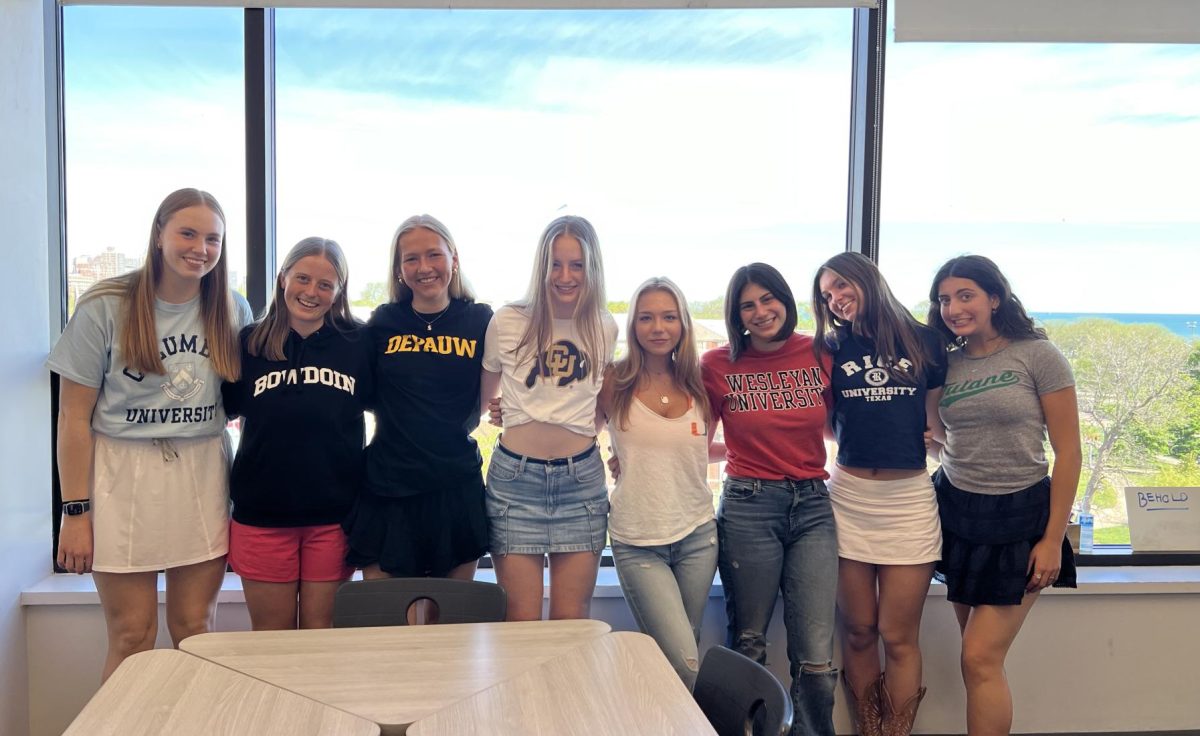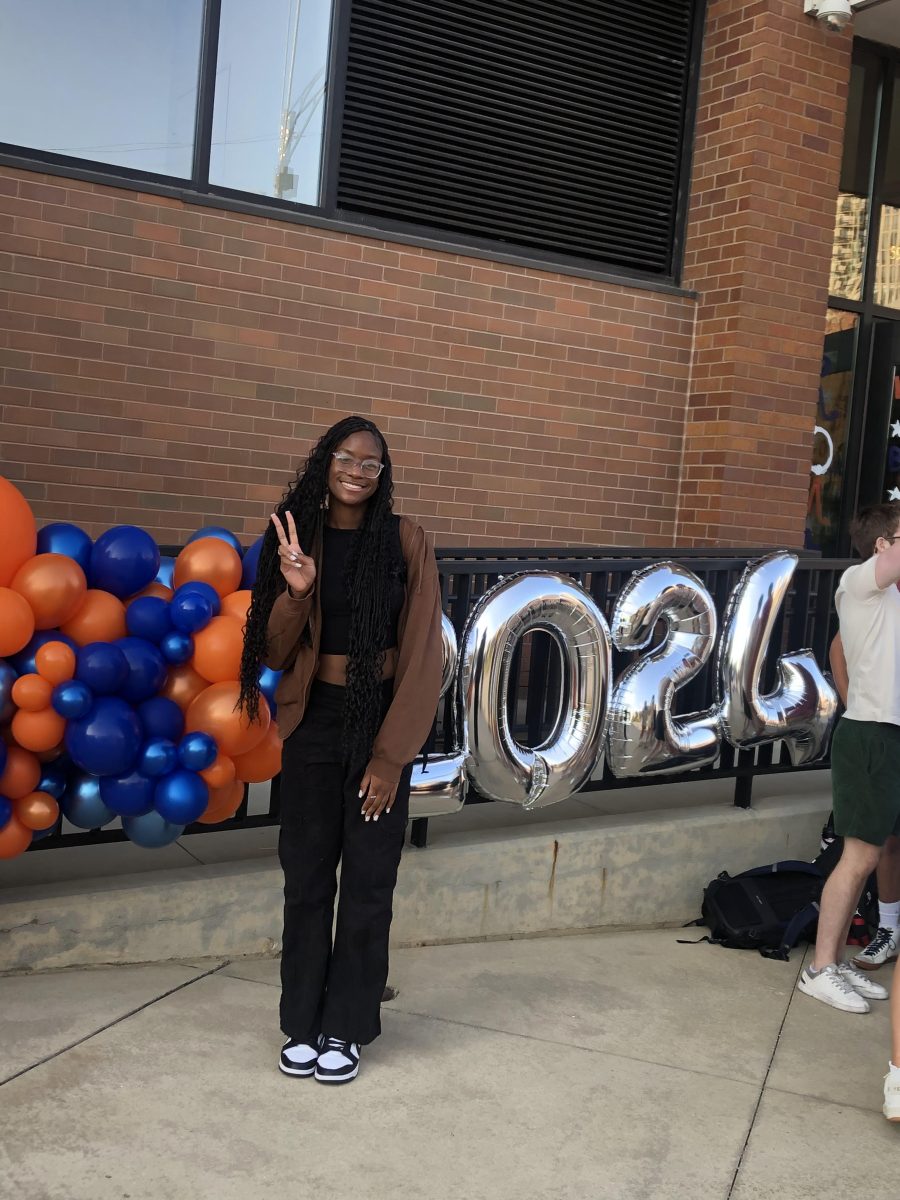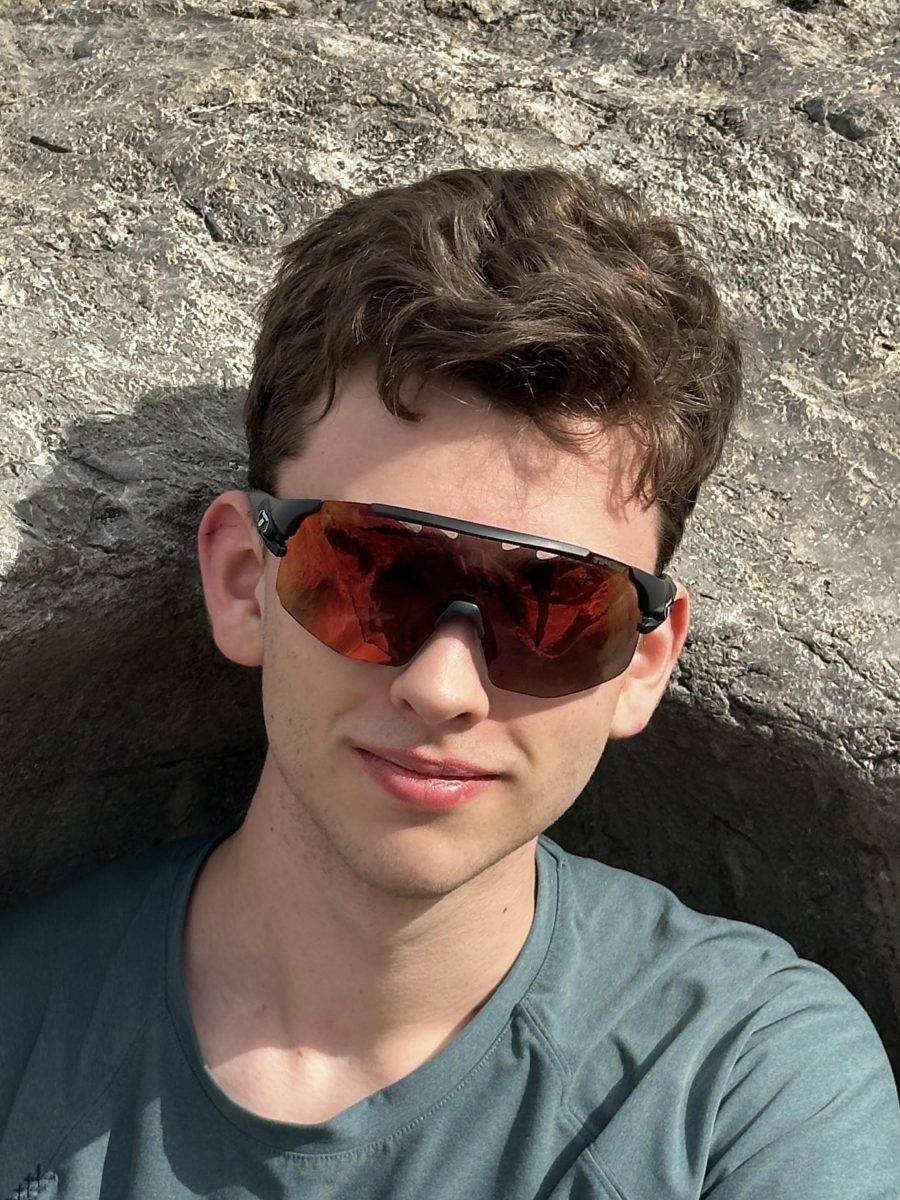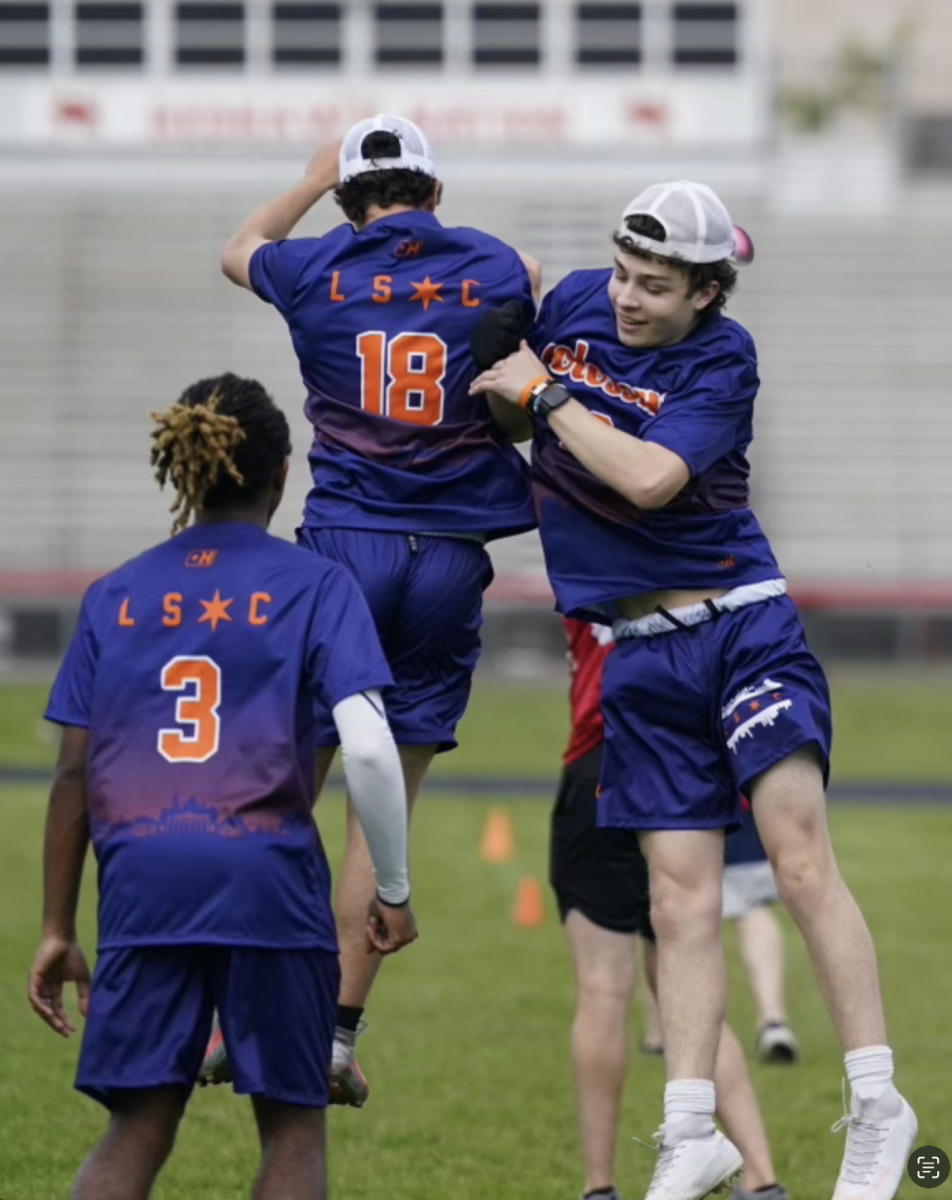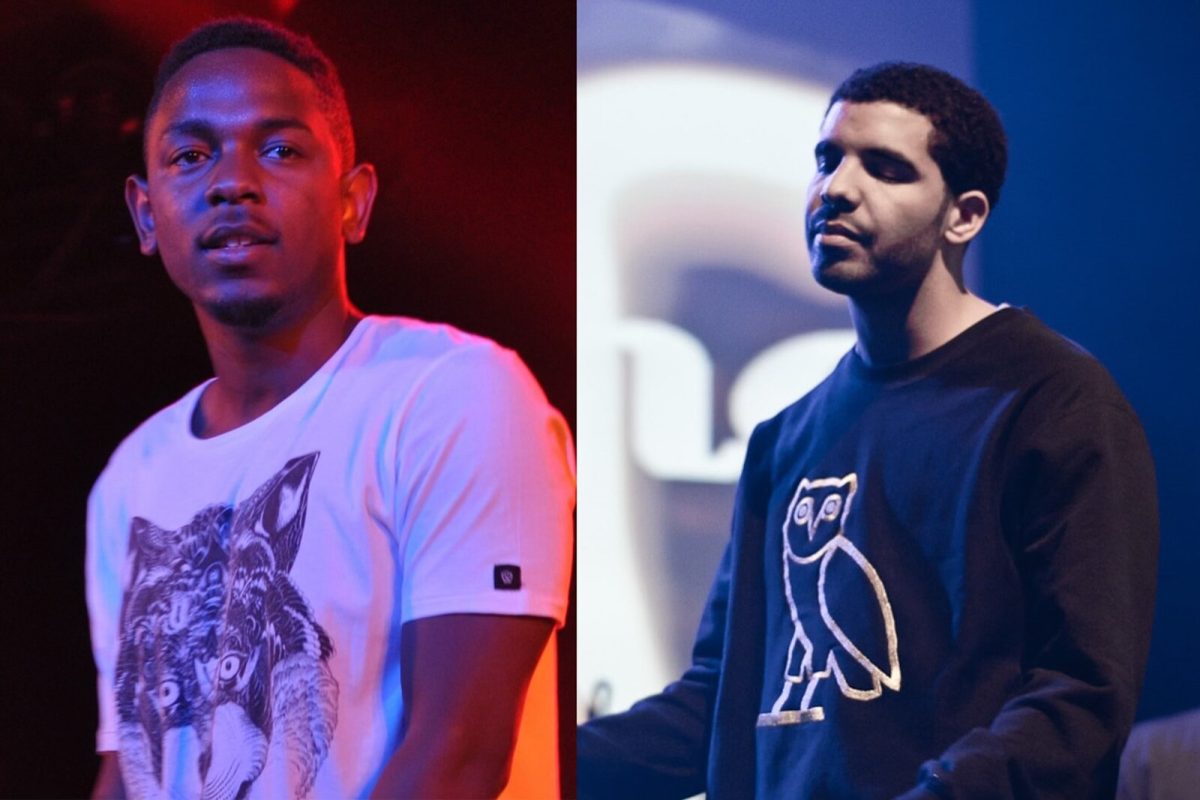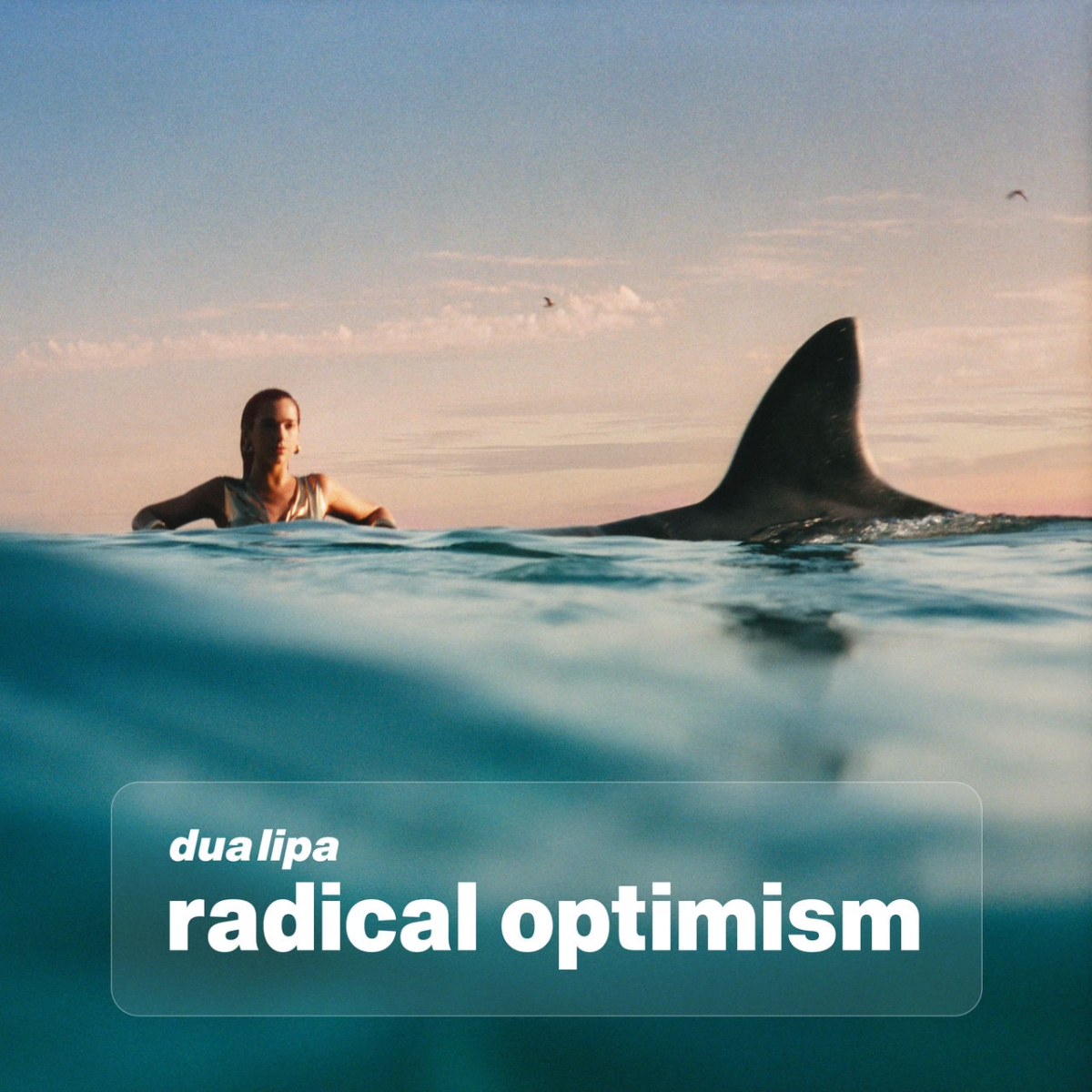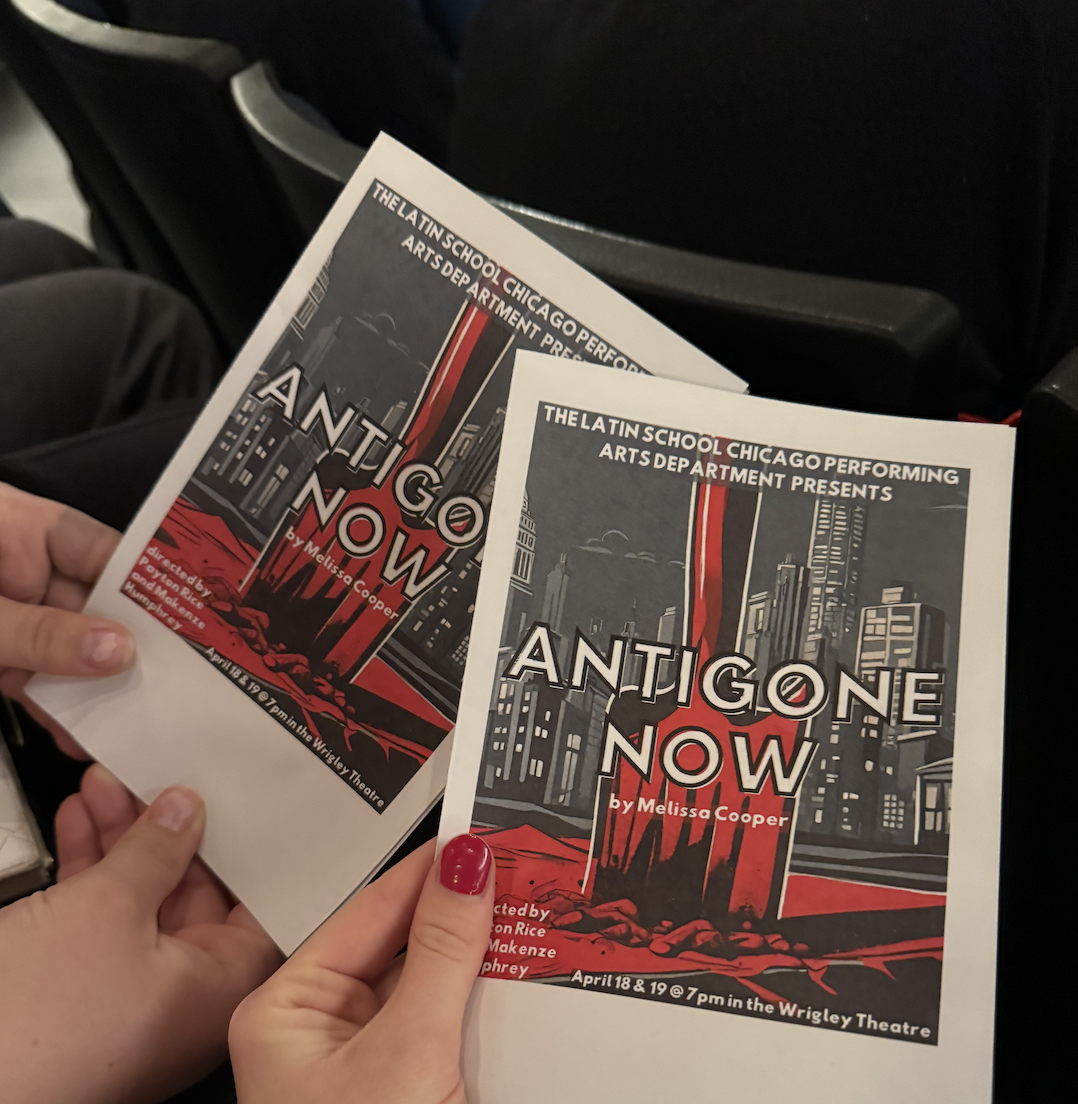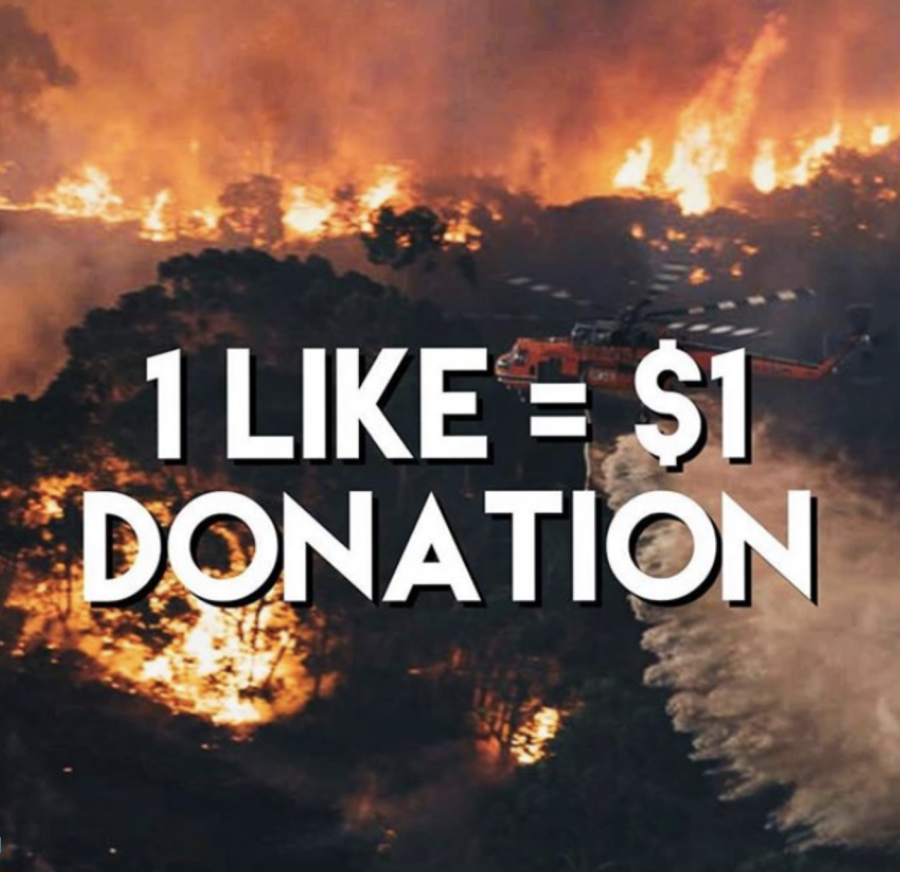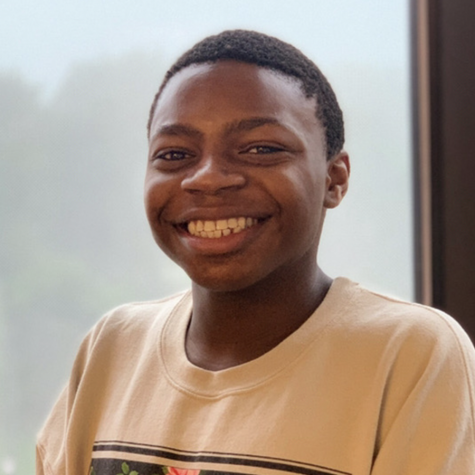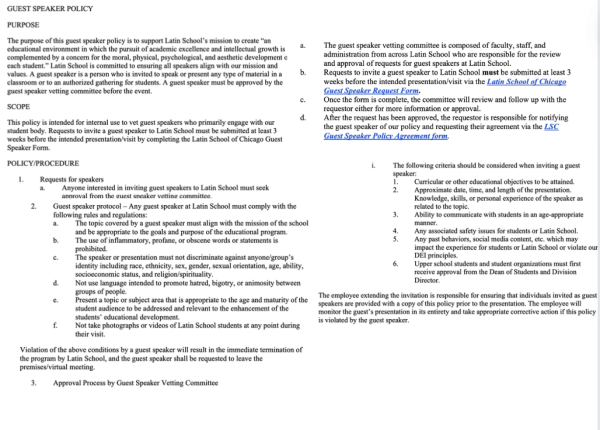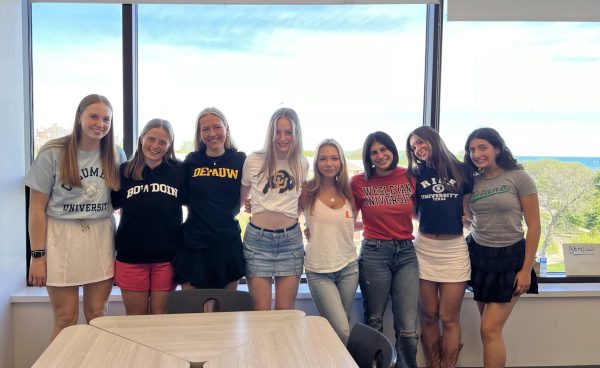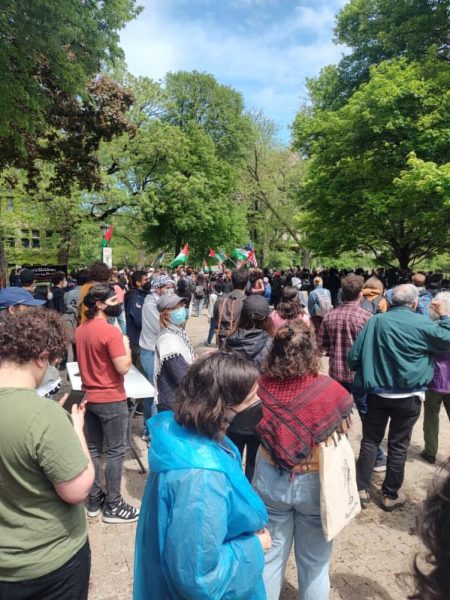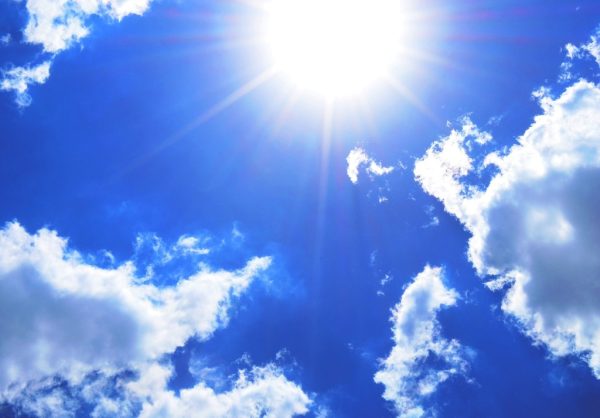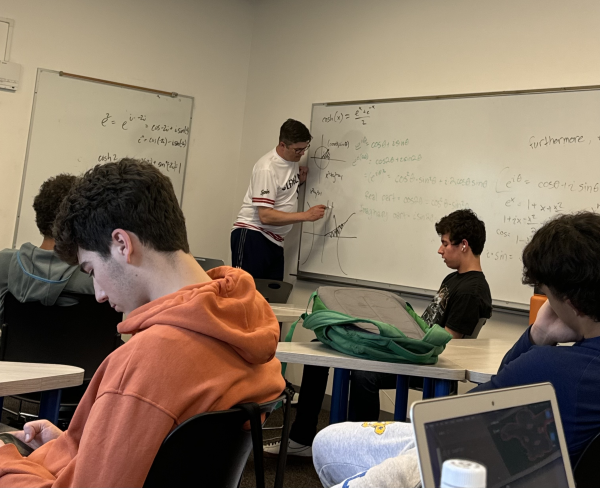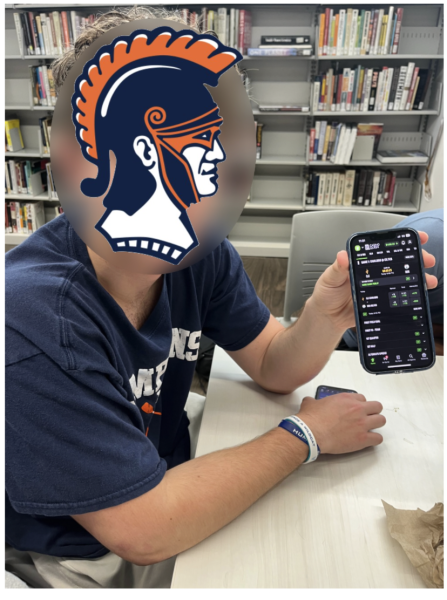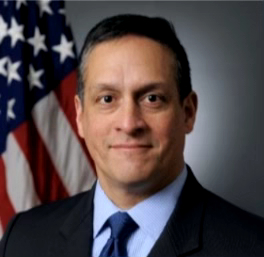What @thewildlifefund Says About Social Media Activism
January 20, 2020
For months now, wildfires in Australia have devastated the continent, consuming nearly 18 million acres of land and decimating its wildlife population. As the tragedy gains international recognition, several social media accounts, such as @thewildfund and @australia_safety, have formed making false promises to donate money or help regrow trees in exchange for liking and sharing one of their posts. Unfortunately, young people still fall for these fake accounts, and some accounts have been able to gain more than 100,000 followers and millions of likes. It’s hard to explain what the motives are behind these accounts, and even harder to explain their success. However, these fraudulent charity accounts reveal a disturbing truth about social media activism.
Although there are hundreds of fraudulent accounts on Instagram, they all have essentially the same set up. The profile for @australia_safety reads, “For every like, we will donate $1 to @natgeo to restore and re-plant Australian forests. 1 follow = $5,” above a link to an Insider article summarizing the devastation in Australia. The account has only one post reading, “1 LIKE = $1 DONATION,” but that post has 1.2 million likes.
However, one can quickly identify several issues with this promise. For one, the situation in Australia has little to do with money. As comforting as it is to believe throwing money at the wildfires may put them out, the persistence of the blaze is due more to its sheer intensity and the abundance of forests in the region than a lack of resources—especially now that nations like the US have started intervening. Moreover, even if Australia was in need of funds, how would these accounts provide them? Where do they get the money to donate a seemingly infinite amount of money to National Geographic—an organization that has no obvious method of aiding the crisis in Australia? Most genuine fundraisers answer these concerns very clearly.
So if these accounts have no intention of helping fight Australia’s fires, what is their purpose? According to Professor Lauren Langman, a sociologists at Loyola University Chicago, “The creators of these accounts try to get as large of a following as possible, specifically a passive following—people who don’t even remember that they are following this account. So in the most basic sense, these people are clout chasers. But when you look at what’s happening to these accounts, you see that they transition from supposedly aiding worldwide crises to marketing streetwear brands. It’s essentially all part of a twisted marketing plan.”
And it’s not the first time this has happened. Accounts just like these, promising to send food and money to Sudan in exchange for likes and shares, appeared during the height of Sudanese protests. Two months later, many of them rebranded themselves and began marketing various streetwear brands to the thousands of people that had followed them.
As twisted as these accounts, they’ve existed in one form or another since the beginning of social media—these charity accounts are only their most recent adaptation. However, their success in taking advantage of young people’s compassion reveals a concerning flaw social media activism.
Mu Paw, a junior, said, “I think the reason so many of us fall for these types of things—why I fell for it once—is because a lot of us tend to be followers. If I see a friend repost something that I agree with, I’ll likely do the same because I also want to support that cause and I trust that my friend researched that topic already for me. But then others do that and it becomes a cycle where no one is really doing research about the topic, just reposting again and again.”
Social media has made activism more accessible than ever before. Within a month, a simple hashtag can become the name of global movement. But as Malcolm Gladwell explains in his piece for the New Yorker, gaining global breadth comes at the cost of depth. Nowadays, it’s simply too easy to call oneself an activist. You don’t need to stage or participate in a protest, attend marches, or even do something as basic as calling your representatives. Becoming an ‘activist’ truly is just a click away—zero risk.
And during a time when such a label implies superior moral conviction, it’s no surprise that millions around the world are liking and sharing post like these fake charity accounts. “I think we also tend to jump on the bandwagon a lot—not even for the sake of helping promote a cause but for clout. We like to be able to say, yeah I helped, I was here first, I’m a good person,” said Mu Paw.
But perhaps the worst consequence of these social media accounts is that they ultimately discourage people who genuinely want to help from participating in social media activism. Valeria Ceron, a junior, said, “I’ve never fallen for stuff like that because, honestly, I’m scared to repost. It seems like so many people have been posting: ‘Don’t repost this, it’s fake.’ So now I’m just kind of scared to post stuff because I don’t know if I’m truly helping or just part of some sick joke.”
Many become disillusioned with the idea of social media activism and abstain from participating in order to avoid being part of the problem. But for all the bad that has come from the phenomenon, there’s been just as much if not more good. It’s global reach has allowed youth from all parts of the world to organize mass protests such as the FridaysforFuture protests and National School Walkout. And many genuine charities use social media to market themselves and collect donations. But unfortunately, it’s hard to find them in a sea of phony accounts.
“I think the problem is, people aren’t doing enough research. Social media is just this really passive thing and people don’t understand that sharing a meme is different from sharing a charity account. You actually have to think about it,” said Zemzem Mohammed, a junior. “I think social media can be a really powerful tool. We just have to be more thoughtful.”
The vast majority of people sharing accounts like @australia_safety had the best intentions. They were deeply moved be a crisis happening on the other side of the world, and wanted to help. But being an ally and truly supporting a cause is not a click away. It requires the initiative to actively search for meaningful ways to make an impact. Social media accounts that take advantage of people’s compassion will always exists. But social media, if wielded thoughtfully, has the power to mobilize millions across the world.

